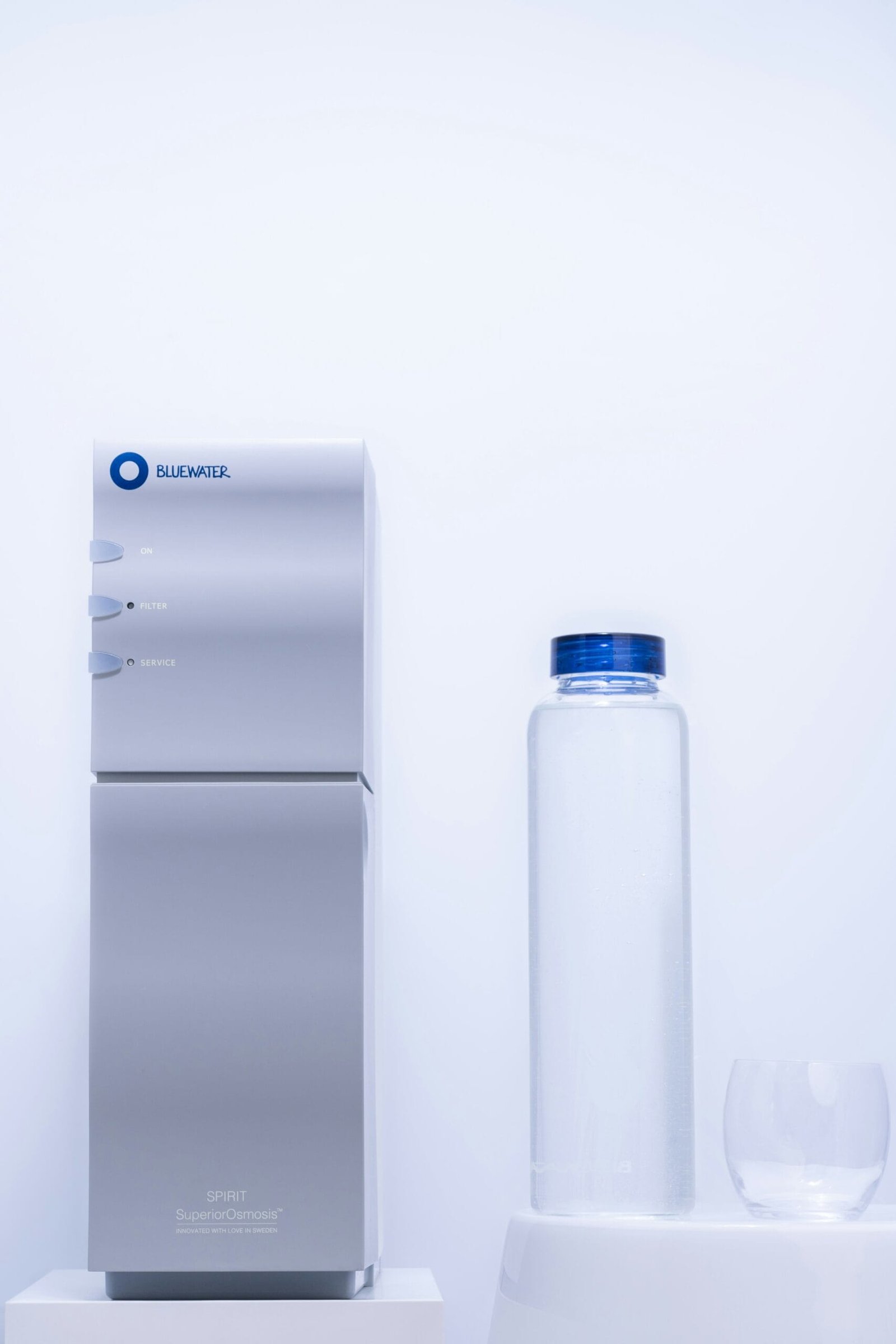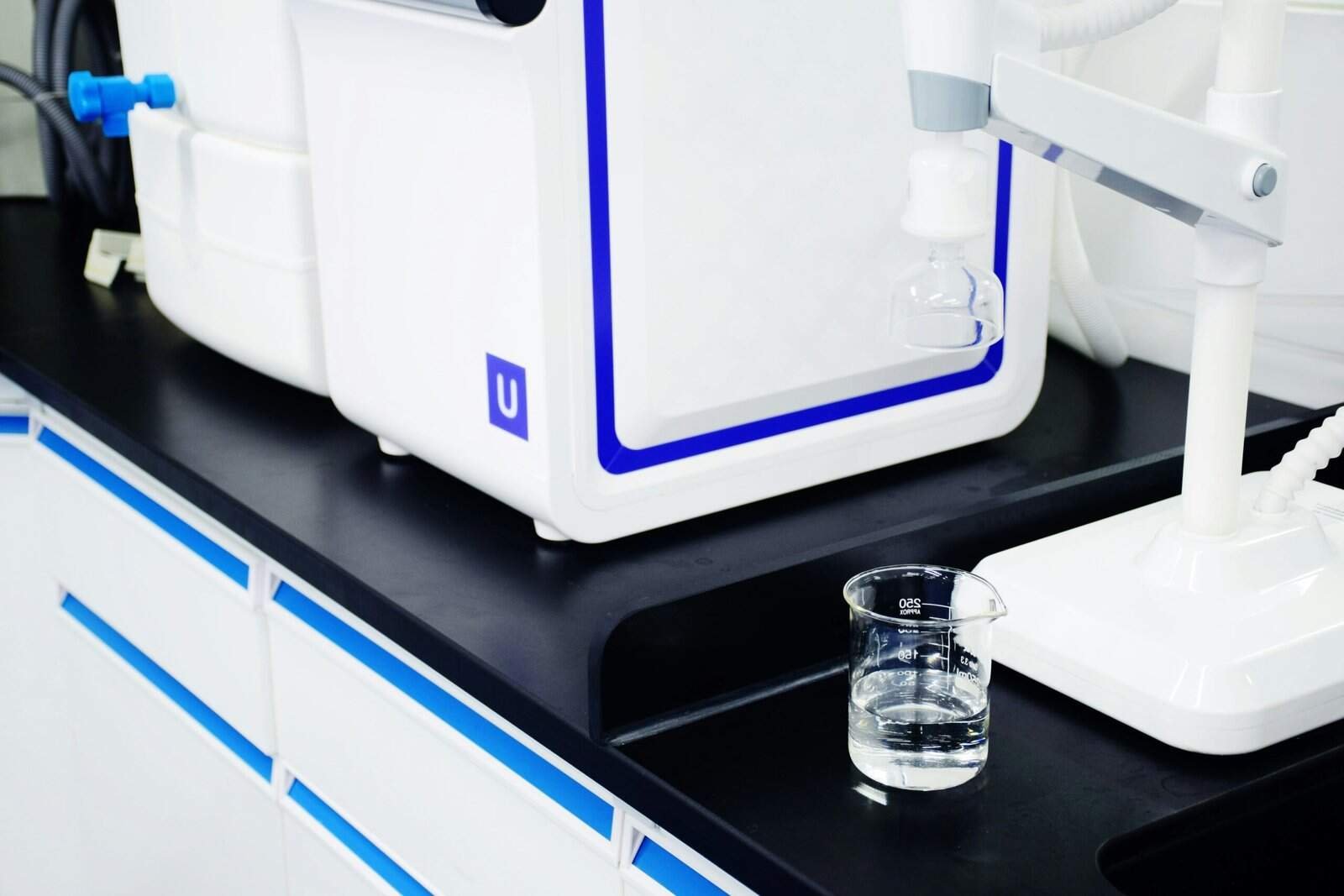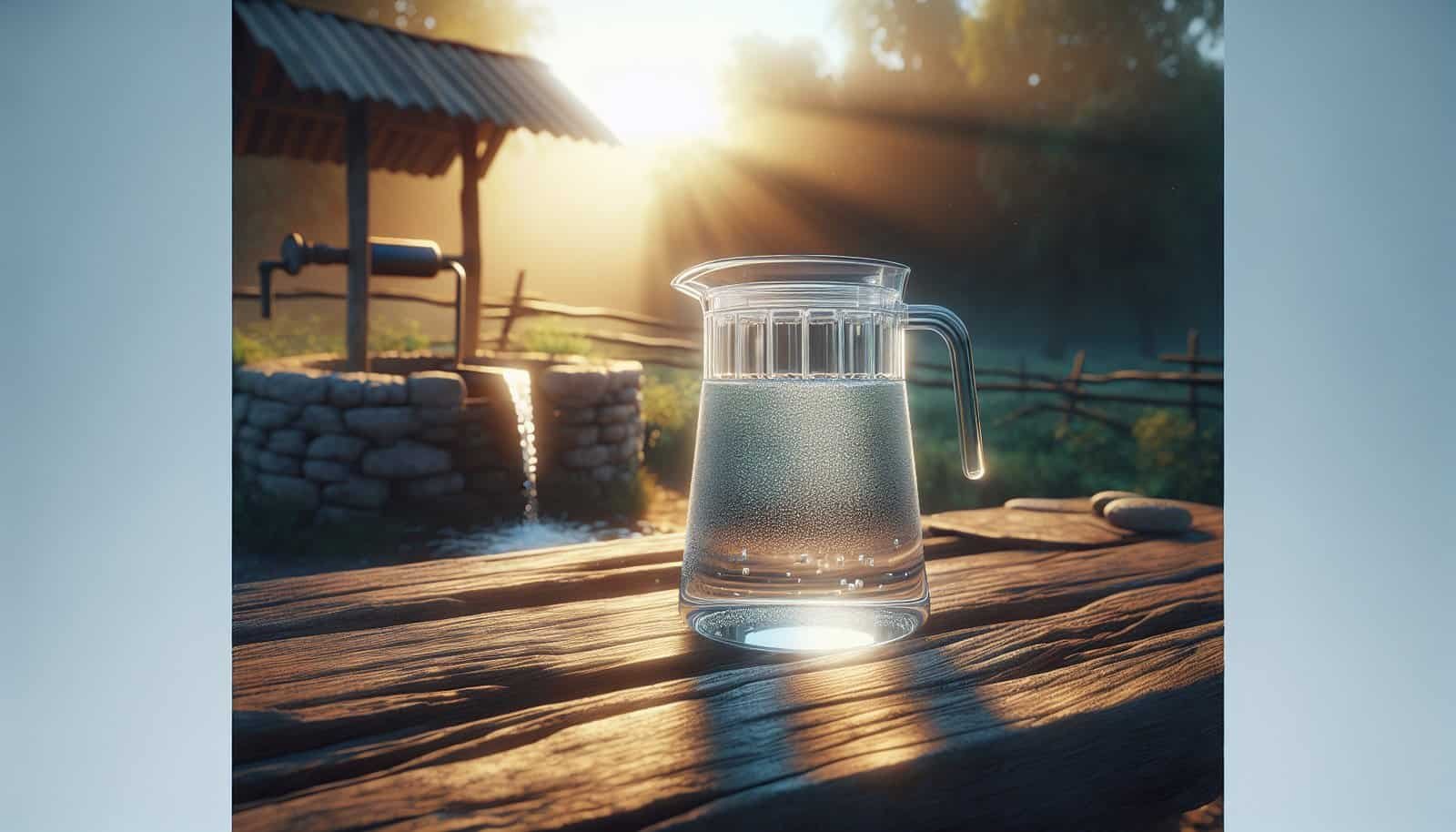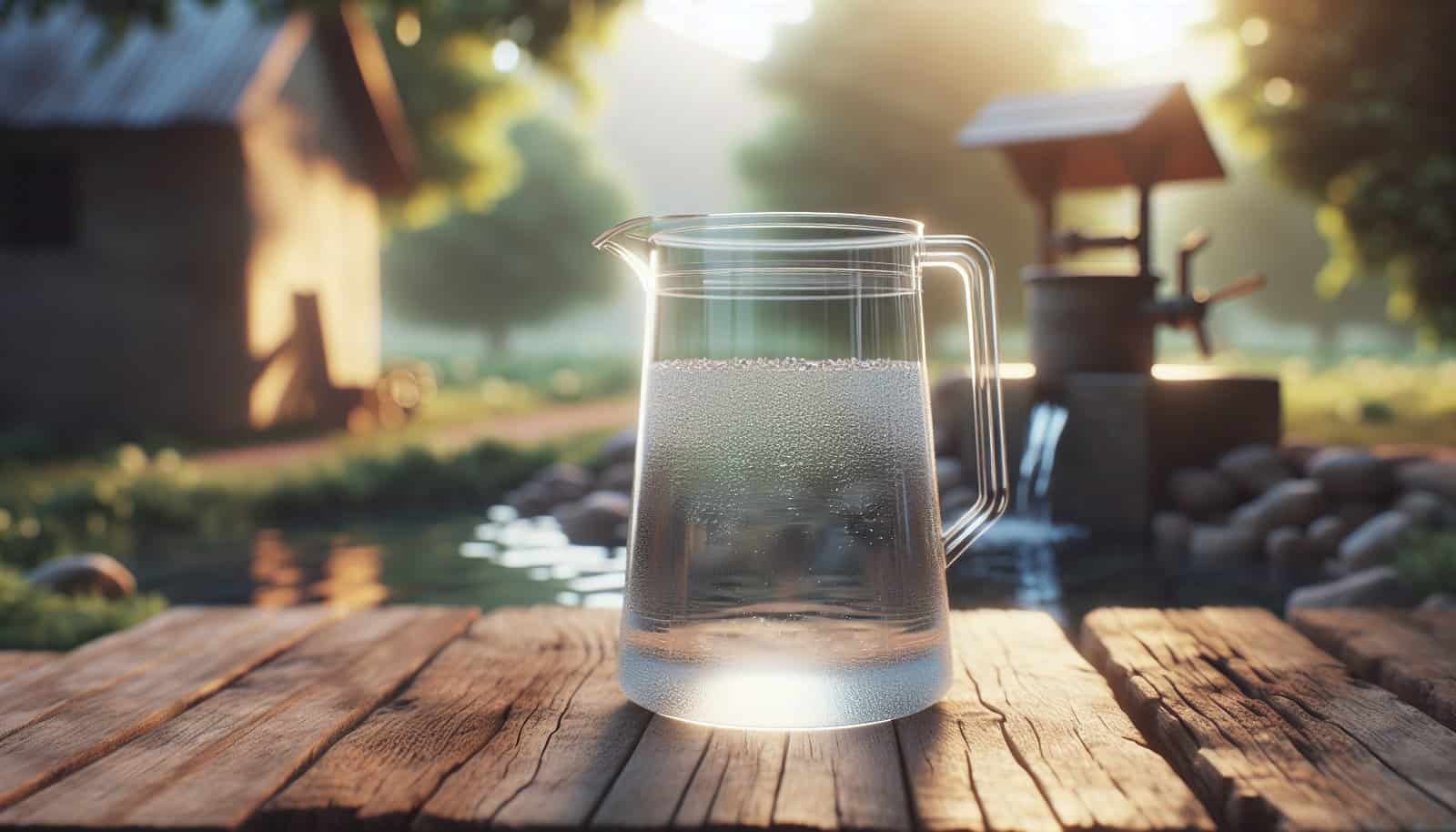Are you worried that your well water might be putting your children at risk and you don’t know what steps to take first?

How Do I Protect Children From Unsafe Well Water?
You want clear, practical steps you can take to keep your children safe when your household relies on well water. This article gives you testing guidance, immediate protective actions, treatment options, maintenance steps, and a family action plan so you can protect young children now and over the long term.
Understand the Risks
You need to know what can be in well water and why children are more vulnerable so you can prioritize actions. Understanding risks helps you decide what to test for and what treatments to use.
Common Contaminants and Their Sources
Well water can be contaminated by bacteria, viruses, chemicals, and minerals from natural and human-made sources. Contaminants may come from agricultural runoff, septic systems, industrial spills, naturally occurring minerals, or failing well components.
| Contaminant | Likely Source | Health Effects in Children |
|---|---|---|
| Coliform bacteria / E. coli | Failing well seal, runoff, septic systems | Gastrointestinal illness, dehydration; severe infections in infants |
| Nitrate / Nitrite | Fertilizers, manure, septic systems | Methemoglobinemia (“blue baby” syndrome) in infants; reduced oxygen delivery |
| Lead | Corroded plumbing, well components, solder | Developmental delays, reduced IQ, behavioral problems |
| Arsenic | Natural geologic sources | Long-term cancer risk, developmental effects |
| Pesticides and herbicides | Agricultural runoff | Endocrine disruption, developmental issues, cancers |
| Volatile organic compounds (VOCs) | Fuel spills, industrial contamination | Neurological and developmental problems |
| Fluoride (excess) | Natural geologic sources | Skeletal and dental effects at high levels |
| Iron, Manganese | Natural sources, plumbing | Staining, taste, but low acute toxicity; can indicate other problems |
| Cryptosporidium / Giardia (parasites) | Surface water infiltration, animal waste | Severe diarrhea and dehydration, especially dangerous for children |
Why Children Are More Vulnerable
Children drink more water per body weight than adults and their organs and immune systems are still developing. Behavior such as playing outside, putting things in their mouth, and preparing formula increases exposure risk. Small children and infants can suffer more severe effects from contaminants like nitrates, lead, and pathogens.
Test Your Well Water
Testing is the first essential step to protecting children. Without test results you may be guessing about the real hazards.
When to Test
You should test your well water at these times: when you buy or sell a home, after well construction or repair, annually for bacteria and nitrates, and after flooding or heavy rains. Test more frequently if someone in the household is sick or if you notice taste, odor, or appearance changes.
What to Test For
Start with bacterial (total coliform and E. coli) and nitrate/nitrite testing annually. Depending on local geology and land use, add tests for lead, arsenic, fluoride, pesticides, VOCs, and heavy metals. If you see oily sheen, fuel smell, or have industrial nearby, test for VOCs.
How to Get Your Water Tested
You can use a certified laboratory or, for initial screening, a home test kit. Certified labs provide accurate, legally recognized results and can test for a wider range of contaminants. Home kits can identify obvious bacterial contamination but may miss low-level chemical hazards.
Interpreting Test Results
Compare results to national or state health guidelines and Maximum Contaminant Levels (MCLs) if provided. For many contaminants, no safe threshold exists for young children, so aim to reduce levels as much as practical. If results show contamination, follow up with consultation from local health department or state environmental agency.
Immediate Protective Actions
While you arrange testing and treatment, there are immediate steps you can take to reduce exposure.
Use Bottled or Treated Water for Drinking and Cooking
If tests show bacteria, nitrates, high lead, or other harmful contaminants, use bottled water or water from a safe public source for drinking, cooking, preparing infant formula, and brushing teeth. This is a fast, reliable temporary measure.
Boiling — When It Helps and When It Doesn’t
Boiling water kills bacteria, viruses, and parasites but does not remove chemical contaminants such as lead, nitrates, or pesticides. Use boiling for microbiological contamination only; for chemical contamination, choose filtration or bottled water.
Point-of-Use Filters for Immediate Relief
Point-of-use (POU) filters installed on kitchen taps or pitchers with certified filters can remove specific contaminants like lead, VOCs, or parasites. Make sure filters are certified for the contaminant you want to remove and follow manufacturer change schedules.

Treatment Options for Home Wells
You’ll need a treatment plan that matches the contaminants you found. Different technologies address different problems, and you may need more than one method.
Whole-House vs Point-of-Use Treatment
Whole-house systems treat all water entering your home, protecting skin contact, bathing, and laundry as well as drinking water. Point-of-use systems treat water at a single tap and are often used for drinking and cooking. For protecting children, prioritize POU systems for consumption and whole-house systems if contaminants affect bathing or laundry (e.g., very high bacteria or chemical exposure).
Common Treatment Technologies
Below is a summary table of common treatment options, what they remove, and pros/cons for protecting children.
| Technology | Removes / Treats | Pros | Cons |
|---|---|---|---|
| Activated Carbon (GAC/PAC) | VOCs, some pesticides, chlorine, taste/odor | Good for organic chemicals and taste; affordable | Doesn’t remove nitrates, arsenic, or microbes reliably |
| Reverse Osmosis (RO) | Nitrates, lead, arsenic (partial), many dissolved solids | Very effective for many dissolved contaminants | Wastes water, slow, needs regular maintenance |
| Distillation | Many contaminants including microbes, metals, minerals | Very thorough for many contaminants | Energy-intensive, slow, removes beneficial minerals |
| Ion Exchange (softening) | Hardness minerals, some radioactive metals, nitrate exchange resins | Good for hardness and some specific contaminants | Does not remove microbes; requires salt or regeneration |
| UV Disinfection | Bacteria, viruses, parasites | Excellent for microbial control without chemicals | Doesn’t remove chemical contaminants; needs clear water |
| Chlorination / Shock Chlorination | Bacteria, viruses | Effective for disinfection, useful for well contamination events | Byproducts possible; not ideal for long-term chemical contamination |
| Aeration / Air Stripping | VOCs, radon | Good for volatile contaminants | Requires proper design and discharge management |
| Sediment Filtration | Sand, rust, particulates | Protects downstream equipment and improves clarity | Doesn’t remove dissolved contaminants |
| Media Filters (e.g., greensand) | Iron, manganese, sulfur | Treats specific mineral problems | Maintenance and regeneration required |
Matching Technology to the Problem
Match the technology to your contaminant profile. For example, child-protection priorities: use bottled or RO-treated water if nitrates are high; use certified lead-removal filters for lead; install UV + sediment pretreatment if bacteria are present; use activated carbon for VOCs and many pesticides.
Choosing the Right System
Selecting the right system involves testing, budgeting, and planning for maintenance. Make decisions based on the specific contaminants, your household’s water use, and your ability to maintain the system.
Step-by-Step Selection Checklist
- Review lab test results and identify contaminants of concern.
- Prioritize contaminants that most affect children (nitrate, lead, microbial pathogens).
- Decide between POU (kitchen tap) and whole-house systems.
- Get quotes from licensed installers and check certifications (NSF/ANSI).
- Confirm ongoing costs: filter cartridges, electricity, water waste, maintenance.
- Ask installer for a maintenance schedule and warranty details.
Certifications and Installer Credentials
Choose systems certified to NSF/ANSI standards relevant to the contaminants: e.g., NSF/ANSI 58 for RO, NSF/ANSI 53 for lead and VOC reduction. Use licensed water treatment professionals and check references. Your local health department or extension service can often recommend vetted contractors.

Maintenance and Monitoring
After installing a system, regular maintenance and follow-up testing are essential to keep water safe for children. A neglected system can fail or even worsen contamination.
Regular Maintenance Tasks
Change filter cartridges on schedule, clean sediment filters, replace UV bulbs yearly or per manufacturer, and maintain softener/regeneration cycles. Keep records of service and change dates so you don’t overlook critical maintenance.
Testing Schedule After Treatment
Continue to test for bacteria and nitrates at least annually, and test for treated contaminants every 6–12 months or as recommended by the system manufacturer. If your system is designed to remove lead or arsenic, periodically verify that removal performance remains within safe limits.
| Test Type | Recommended Frequency | Why |
|---|---|---|
| Total coliform / E. coli | Annually and after well repair/flood | Microbial safety |
| Nitrate/nitrite | Annually and after heavy fertilizer use/flood | Infant risk |
| Lead | After treatment and every 1–2 years | Corrosion and materials issues |
| Arsenic/VOCs/Pesticides | Every 1–3 years or after contamination event | Contaminant variability |
| Post-treatment performance | Per system recommendation (e.g., RO yearly) | Ensure filter efficacy |
Well Construction and Site Management
You can reduce the likelihood of contamination by ensuring that the well is properly constructed and the site is managed. Prevention is often cheaper and more reliable than treatment.
Well Location and Sealing
Make sure your well is located uphill and away from septic systems, livestock areas, fuel tanks, and chemical storage. The well casing and cap should be intact, sanitary, and at an appropriate height above ground. A professional should inspect for cracks or gaps.
Protect the Area Around the Well
Keep pesticides, fertilizers, animal wastes, and household chemicals away from the wellhead. Use gravel pads or concrete aprons to prevent surface runoff from entering the well and maintain at least a one-foot clearance around the casing.
Septic System Management
Maintain your septic system by pumping regularly and keeping drainfield areas off-limits to vehicles and heavy equipment. If your septic system is too close to the well, consider relocating one of them or upgrading to a more protective design.

What to Do After Flooding or Heavy Rain
Floods and heavy rains can introduce microbes and chemicals into wells. Take swift action to protect children during these events.
Immediate Steps Post-Flood
Do not use well water until it has been tested. Use bottled water for drinking, food prep, and infant formula. Shock-chlorinate your well following local health department guidance and test for bacteria before returning to normal use.
When to Call a Professional
If flooding caused visible damage, submerged wellheads, or strong fuel/chemical smells, contact a licensed well contractor and your local health department. These events can require repair, disinfection, and retesting to protect children.
When Children Should Avoid Well Water
There are specific scenarios when you must avoid using well water for children, especially infants.
Situations Requiring Immediate Avoidance
- Positive E. coli or other pathogenic bacteria results.
- Nitrate levels above 10 mg/L (as nitrogen) — especially for infants under 6 months.
- Chemical contamination above health guideline levels (lead, arsenic, VOCs).
- Strong odors or visible contamination after a spill or flood.
In these cases, switch to bottled water or water from a safe public system for drinking, cooking, and formula preparation until the issue is resolved.

Medical and Public Health Considerations
You should know the signs of water-related illness and how to respond if your child is exposed.
Symptoms to Watch For
Common symptoms of waterborne illness include diarrhea, vomiting, stomach cramps, fever, and unusual lethargy. Lead and long-term chemical exposures can cause developmental delays, learning difficulties, and behavioral changes that may appear over time.
What to Do If You Suspect Exposure
If your child has symptoms and your well tests positive for pathogens or harmful chemicals, seek medical care promptly. Bring water test results to the pediatrician so clinicians can consider relevant exposures. For suspected lead exposure, request blood lead level testing.
Working with Health Authorities
Contact your local health department for guidance on disinfection, testing, and safe water recommendations. Health departments can offer practical steps and may provide financial assistance resources or referrals.
Legal, Financial and Community Resources
You don’t have to manage this alone — there are programs and resources that can help with testing and treatment.
Funding and Assistance Programs
Some state and county programs offer grants or low-interest loans for well repair, testing, and replacement. USDA rural water programs, state wellowner assistance programs, and community action agencies sometimes provide help for low-income households.
Technical Assistance
Your state or county health department, university extension services, and local environmental agencies can advise on testing, treatment options, and licensed contractors. They often maintain lists of accredited labs and installers.
Create a Family Action Plan
A clear action plan keeps your family safer and ensures you respond quickly if contamination is detected.
Sample Action Plan (Step-by-Step)
- Immediately use bottled water for drinking, cooking, and formula if contamination is suspected.
- Collect water samples following lab instructions for a certified test.
- Contact local health department with positive results and follow their recommendations.
- If bacterial contamination, shock-chlorinate the well and retest.
- If chemical contamination, consult an environmental professional to identify treatment or source mitigation.
- Install appropriate POU or whole-house treatment systems prioritized by children’s exposure needs.
- Maintain systems and retest annually or as recommended.
- Keep a record of tests, treatments, and maintenance activities.
Emergency Water Supply and Storage
Keep a supply of bottled water or store treated water in food-grade containers for emergencies. Rotate and replace stored water according to safety recommendations so your supply remains safe for children.
Frequently Asked Questions
You likely have practical questions — here are the answers to common concerns parents face.
How often should I test the well if I have young children?
Test for bacteria and nitrates at least once a year, and test for other contaminants based on local risks every 1–3 years. Test immediately after flooding, well repairs, or if you notice changes in water quality.
Can boiling water make it safer for my baby?
Boiling kills pathogens but does not remove nitrates, lead, arsenic, or industrial chemicals. For infants, boil only for microbial contamination. Use bottled or properly filtered water if chemical contaminants are present.
Are pitcher filters enough to protect my children?
Pitcher filters can reduce some contaminants like chlorine and improve taste, but only certain models are certified to remove lead or other contaminants. Check certification and consider an RO system or certified faucet-mounted filter for critical contaminants.
How do I know if my filters are working?
Keep a maintenance log and replace filters according to manufacturer instructions. Test water before and after filtration to verify performance, especially when protecting children.
What do I do if my test shows lead?
Stop using well water for drinking and food prep until you have a certified filtration system or an alternative water source. Use filters certified to remove lead, such as NSF/ANSI 53 or 58 systems, and consult a plumber to check for corroded fixtures.
Can I treat my well myself?
Some maintenance, like shock chlorination under guidance, can be DIY if you follow reputable instructions. For system installation and complex contamination (e.g., chemical plumes), hire licensed professionals.
Checklist for Protecting Children Today
Use this short checklist to prioritize actions.
- Test well for bacteria and nitrates now if you haven’t recently.
- Use bottled or certified-safe water for infants and young children until results are confirmed.
- If bacteria are present, don’t use well water for drinking or cooking until disinfected and retested.
- If nitrates exceed safe levels, stop using well water for infant formula and drinking.
- Install certified filters or treatment systems targeted to contaminants affecting children.
- Keep an emergency water supply and a written action plan.
- Maintain your well and treatment systems and retest regularly.
Conclusion
You can significantly reduce your children’s risk from unsafe well water by testing promptly, using immediate protective measures, installing appropriate treatment, and maintaining ongoing monitoring. Taking methodical steps and using available public resources will help you keep your children healthy and safe now and into the future.
